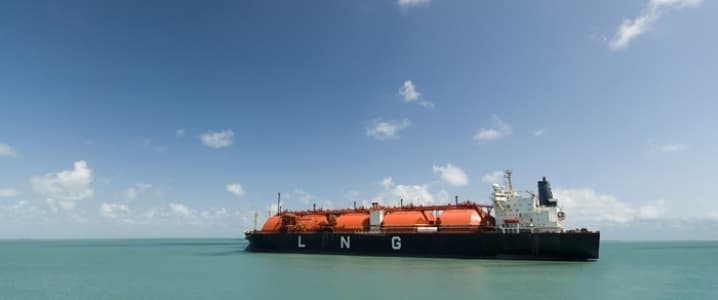On April 26th, a tanker carrying U.S. liquid natural gas (LNG) arrived at the Port of Sines, Portugal, opening a new source of European energy import. This LNG market not only creates new demand for U.S. shale gas, but also allows the European Union to take the next step towards the realization of greater energy source diversification.
Logistics are still lacking across Western Europe, leaving some states worse off
The concern with the Portuguese port of entry, particularly for Central and Eastern European states (CEE), which remain heavily dependent upon Russian energy imports, is the lack of sufficient transport routes from the Iberian Peninsula and across Western Europe.
New U.S. imports, therefore, may not significantly liberate many in this region from problematic energy dependence and the underlying market and national security implications.
This obstacle may be overcome by an agreement outlined in a U.S.-EU Energy Council meeting in May, concerning the development of a floating LNG terminal on Croatia’s Krk Island. Targeting completion in 2018, the new terminal will become the gas hub for CEE states.
This critical piece of energy infrastructure, when combined with the infrastructure of a CEE North-South Energy Corridor, would provide a secure source of gas to the Baltic and Balkan states, Moldova, Romania, Bulgaria, Austria, Greece, Turkey, and Ukraine. The new Krk Island terminal will not simply provide gasification capacity to U.S. LNG imports alone, but will open the CEE energy market to imports and supply diversification from other global LNG producers, such as Australia.

The location of the planned LNG terminal on Croatia’s Krk Island
Lower gas prices put Russia in a favourable position
This emerging CEE energy region will not solely be market-driven. There is currently a global glut of gas supply, and gas import prices across Europe are a third of those realized just 3 years ago, as shown in the diagram below. Furthermore, existing CEE LNG transport infrastructure such as the Nord Stream pipeline are operating well below capacity, allowing for an easy and cheap increase in imports from Russia if necessary. Related: How The U.S. Dollar Influences Oil Prices
In the case of the U.S., LNG exports to central Europe have lost their initial market price advantage against continued imports from Russia. Gazprom plans to maintain gas export levels to Europe of approximately 160 billion cubic meters through 2018, ensuring that lower prices are maintained.
(Click to enlarge)
Strategic concerns and a desire to diversify remains
Despite the global glut of natural gas, Europe, and CEE states specifically, will remain a tempting market. The significant concern for alleviating CEE energy dependence on Russia was clearly visible in a March letter regarding the possible development of the Nord Stream 2 pipeline.
Eight heads of government of CEE member states sent a letter to European Commission President Jean-Claude Juncker noting the potentially destabilising geopolitical consequences of the addition of this new gas line, further tying the region to Russia for its energy needs.
ADVERTISEMENT
The pipeline’s construction, specifically supported in Berlin, would double the import capacity of Nord Stream 1 which itself is only utilised at 50 percent of its maximum. Proponents contest that, should Russia impose energy reductions or a complete shut-off to achieve its geopolitical ends, the additional gas infrastructure could carry a reverse flow of gas from Germany into affected areas in CEE. Related: Which State Has The Highest Gasoline Taxes?
CEE heads of government seem unconvinced by this argument. While Russia has not specifically used this lever of influence for some time, it now holds de-facto control over the Caspian Sea, owed to its military actions in Syria. This control all but ensures any effort to bypass Russia with the proposed Trans-Caspian Pipeline will be stymied, making this alternative for CEE LNG source diversification increasingly unlikely.
These geopolitical factors leave the development of the LNG terminal on Krk perhaps the most promising new avenue for market-driven supply diversification for the CEE states. Furthermore, it provides a significant opportunity for the growing U.S. LNG industry, which must find new demand amidst a global saturation of supply.
By Jon Lang via Globalriskinsights.com
More Top Reads From Oilprice.com:
- Argentina Makes Good On Debts With These Energy Giants
- Is An Energy Crisis Brewing In The Caribbean?
- The Wildest Predictions For Oil Prices In 2016



















